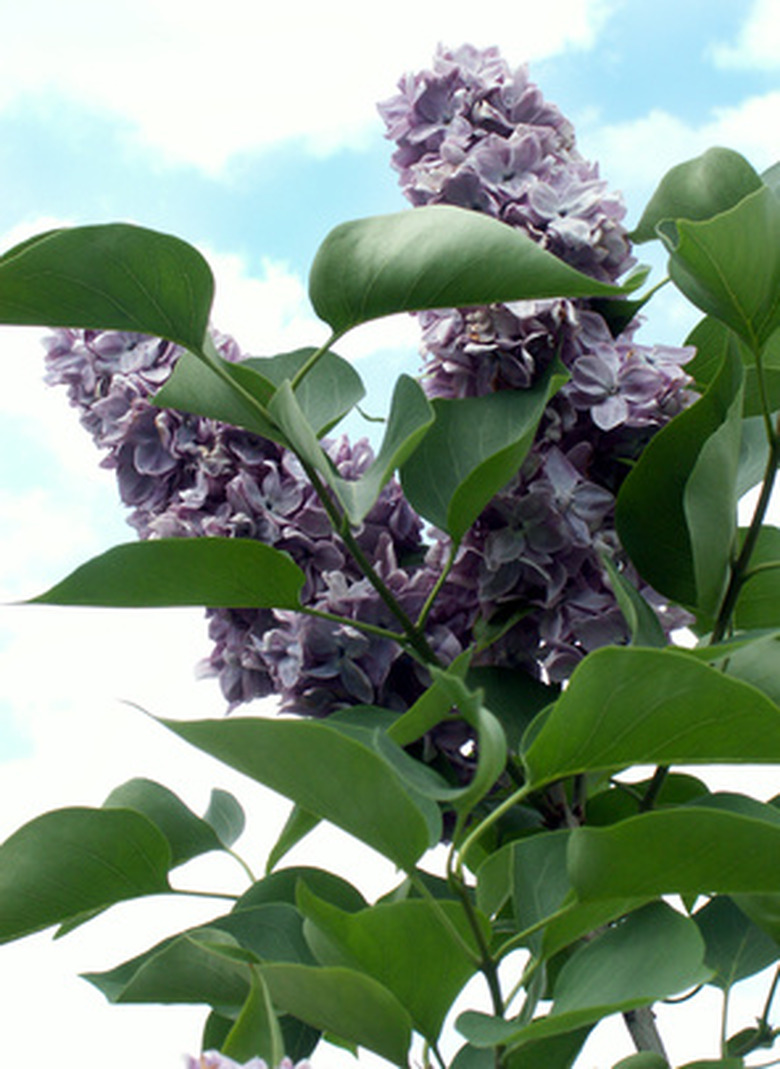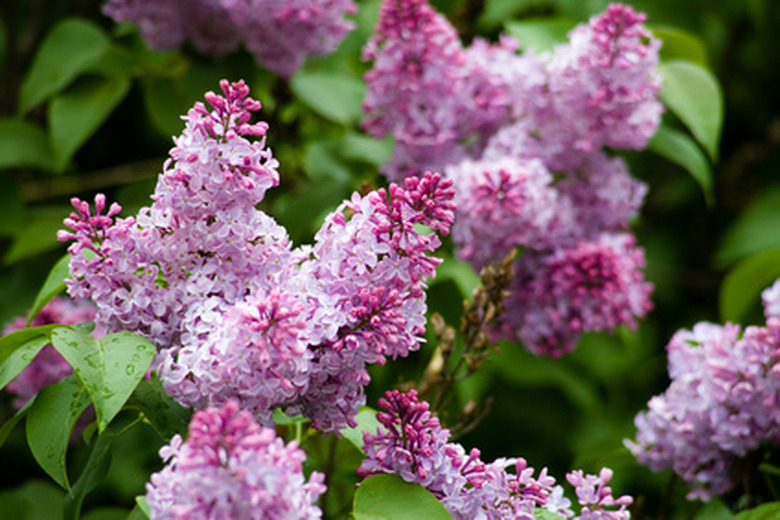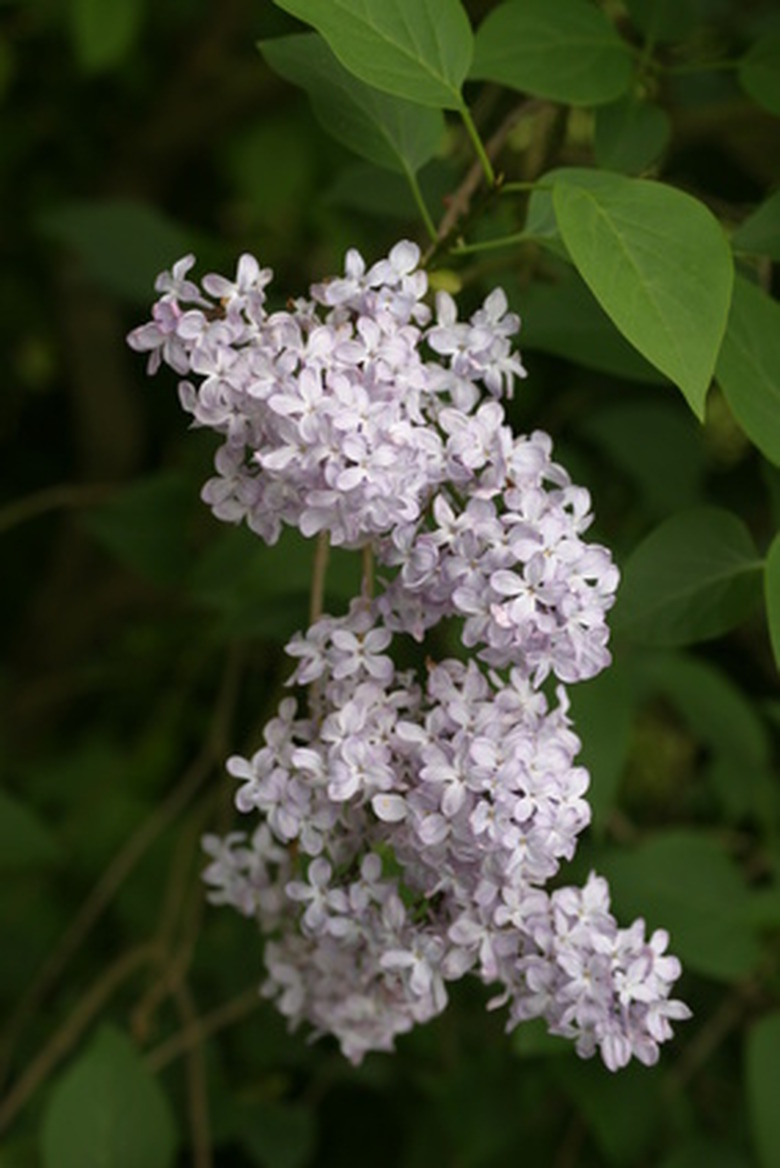Reasons Why A Lilac Bush Will Not Flower
Lilac bushes usually bloom consistently every spring with clusters of fragrant purple, white or pink flowers. Even bushes that have been neglected for years might produce a few flowers. However, once in a while a lilac bush may stop blooming. This situation is frustrating, because lilac bushes only bloom once a year, so if yours do not bloom you'll have to wait an entire year to experience that distinctive fragrance and those dazzling clusters of flowers. Fortunately, most issues that could cause the bush to not bloom are easily remedied. Your lilac may not bloom this year, but next spring should bring an abundance of blooms.
Lack of Sunlight
Lilacs need to experience full sunlight at least six hours daily. If your bush has failed to bloom, examine surrounding trees–it is possible that they grew enough during the last year to block the sunlight from reaching your lilac. Trimming those trees might remedy the problem. Additionally, a lilac bush can shade itself. If it becomes overgrown and dense, you may find that a few flowers will only appear around the edges. Cutting out some of the oldest and thickest branches all the way to base should enable the entire bush to receive the light it needs.
- Lilac bushes usually bloom consistently every spring with clusters of fragrant purple, white or pink flowers.
- If your bush has failed to bloom, examine surrounding trees–it is possible that they grew enough during the last year to block the sunlight from reaching your lilac.
Soil Imbalance
Lilacs require a soil pH of 6 to 7. Soil-testing kits are available in most garden centers. Follow the manufacturer's directions to determine the pH level of the soil around the bush. The soil needs to be alkaline, so if it is too acidic the flowers will not bloom. Adding lime or ashes from a fireplace around the base of the bush can help balance the soil. Fertilizer can also help, but do not use a nitrogen-rich fertilizer. Nitrogen will cause foliage to grow, but not flowers. Choose a fertilizer with the numbers 7/6/17.
- Lilacs require a soil pH of 6 to 7.
- The soil needs to be alkaline, so if it is too acidic the flowers will not bloom.
Pruning
Improper pruning almost always causes lilac blooms to not appear in the spring. Lilacs should be pruned right after they bloom and the flowers die back. Waiting until later to prune a lilac bush is a costly mistake, because the flowers that will bloom next year set right after the old flowers die. If you wait until mid-June to prune your bushes, you'll prune off the following year's blooms. If you pruned too late last year, do not prune again in the current year, and you should experience full blooms next spring.



